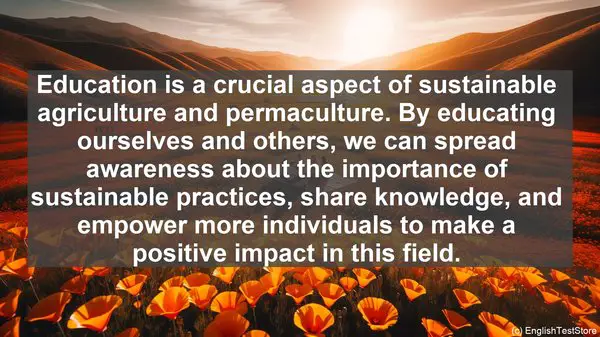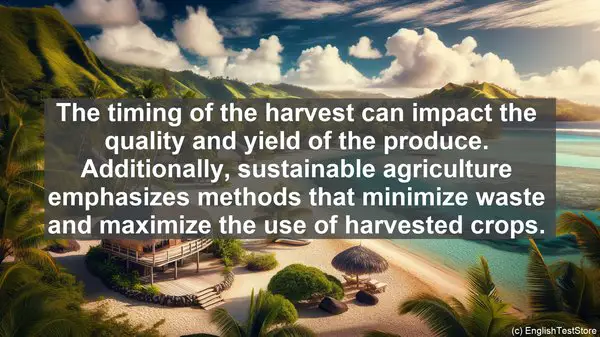Introduction: The Importance of Verbs in Conversations
When it comes to conversations, verbs play a crucial role. They are the action words that bring life to our sentences. In the context of sustainable agriculture and permaculture, using the right verbs is even more important. They help us describe processes, actions, and concepts related to this field. Today, I’ll be sharing the top 10 English verbs that you should know for effective communication in this domain. Let’s get started!
1. Cultivate
Cultivate is a verb that goes beyond just planting. It encompasses the entire process of nurturing and growing crops or plants. When you cultivate, you’re not just tending to the soil, but also ensuring the right conditions for growth, such as water, sunlight, and nutrients.
2. Harvest
Harvesting is the action of gathering crops when they’re ripe and ready. It’s a crucial step in the agricultural cycle. The timing of the harvest can impact the quality and yield of the produce. Additionally, sustainable agriculture emphasizes methods that minimize waste and maximize the use of harvested crops.
3. Compost
Composting is the process of decomposing organic matter, such as food scraps or plant waste, to create nutrient-rich soil. It’s a sustainable alternative to chemical fertilizers. When you compost, you’re not just disposing of waste, but also creating a valuable resource for your garden or farm.
4. Rotate
Crop rotation is a practice where different crops are grown in a specific sequence on the same piece of land. This helps maintain soil fertility, control pests and diseases, and reduce the need for synthetic inputs. By rotating crops, you’re essentially giving the soil a break from specific nutrient demands and pest pressures.
5. Mulch
Mulching involves covering the soil with a layer of organic or inorganic material, such as straw, leaves, or plastic. It serves multiple purposes in sustainable agriculture. It conserves moisture, suppresses weed growth, regulates soil temperature, and improves overall soil health.
6. Irrigate
Irrigation is the process of supplying water to crops or plants. In sustainable agriculture, the focus is on efficient water use. Techniques like drip irrigation, which delivers water directly to the plant’s roots, are preferred over traditional methods that can lead to water wastage.
7. Preserve
Preserving refers to the actions taken to maintain the quality and shelf life of harvested produce. This can include techniques like canning, drying, or freezing. By preserving food, we reduce waste and ensure a steady supply of nutritious options, even during off-seasons.
8. Educate
Education is a crucial aspect of sustainable agriculture and permaculture. By educating ourselves and others, we can spread awareness about the importance of sustainable practices, share knowledge, and empower more individuals to make a positive impact in this field.

9. Collaborate
Sustainable agriculture is not just an individual effort; it requires collaboration. By working together with other farmers, researchers, and stakeholders, we can exchange ideas, pool resources, and find innovative solutions to the challenges we face.

10. Adapt
Adaptability is key in the world of sustainable agriculture. With changing climates and evolving ecosystems, being able to adapt our practices is crucial. Whether it’s trying out new techniques or adjusting our strategies, the ability to adapt ensures the long-term viability of our agricultural systems.
